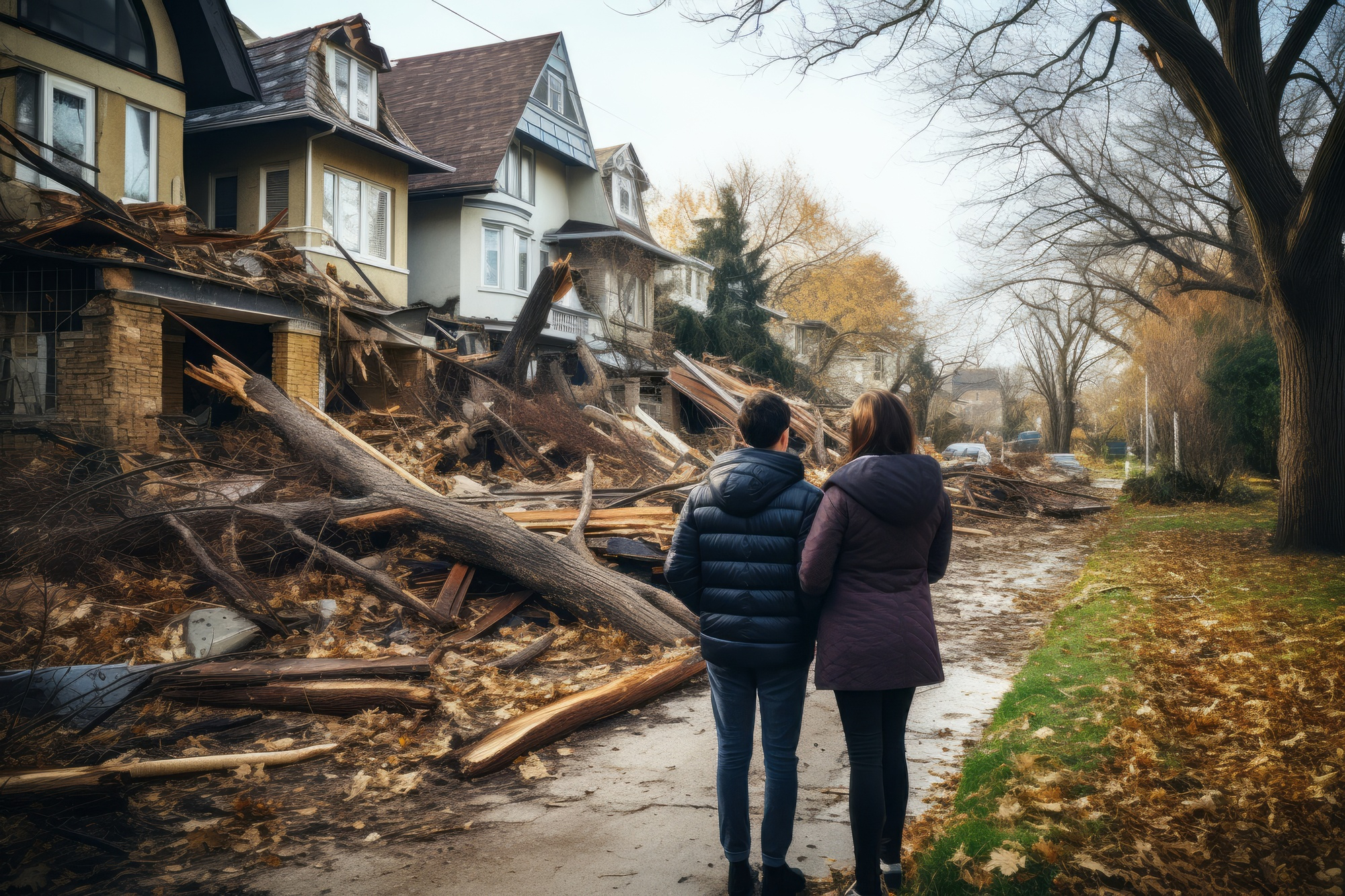When wildfires, floods, or hurricanes strike, homeowners often turn to their insurance policies—only to realize too late that not all disasters are covered. If you’re asking whether your home insurance covers natural disasters, the answer is: it depends.
Understanding what’s included (and what’s not) can help you avoid major financial surprises and give you time to explore supplemental coverage if needed.
What Does Standard Home Insurance Typically Cover?

Most standard homeowners insurance policies include protection against certain named perils, like fire, theft, vandalism, and some weather-related events such as wind or hail.
However, policies vary significantly based on the insurer, your location, and the specific type of coverage you’ve selected.
To get a full picture of what’s generally included, check out our guide on what homeowners insurance covers.
What Natural Disasters Are Usually Covered?
Standard home insurance policies may include protection against:
- Wildfires
- Windstorms
- Lightning strikes
- Hail damage
- Volcanic eruptions
These are often covered under the dwelling or “structure” portion of your policy and may extend to personal belongings and loss of use, depending on the policy details.
What’s Usually Not Covered?
Unfortunately, many of the most destructive and expensive natural disasters require separate coverage:
- Floods: Damage from flooding (even if caused by a storm) is not covered by standard homeowners policies. You’ll need a separate flood insurance policy, typically offered through the National Flood Insurance Program (NFIP) or private insurers.
- Earthquakes: Coverage for earthquakes is also excluded unless you add a specific earthquake endorsement or buy a standalone policy.
- Landslides & Sinkholes: These are generally not covered unless specified in your policy or local laws require it.
For a deeper dive into how disaster coverage works, visit this helpful resource from Los Angeles County’s Disaster Resource Center.
What About “Acts of God”?

You may have heard the term “Act of God” in relation to insurance, but it’s not a clearly defined category. Instead, insurers look at the cause of damage. For example:
- A tree falls on your house during a windstorm? Likely covered.
- A flood destroys your basement? Likely not—unless you have flood insurance.
Always ask your insurer how they define covered perils, and whether specific exclusions apply in your region.
How to Protect Yourself from Coverage Gaps
1. Review Your Current Policy Carefully
Don’t assume your policy includes all types of natural disasters. Request a coverage summary or declaration page from your insurer to see what’s listed—and what’s excluded.
2. Consider Supplemental Insurance
If you live in a high-risk area (like a floodplain or near a fault line), supplemental insurance isn’t optional—it’s essential.
Ask your provider about adding:
- Flood insurance
- Earthquake endorsements
- Hurricane or windstorm deductibles
3. Reassess Annually
Natural disaster risks can change over time. What wasn’t a concern when you bought your home may now pose a threat due to climate shifts or increased storm activity. Re-evaluate your coverage annually, especially before peak disaster seasons.
Final Thoughts
Not all home insurance covers natural disasters—and assuming you’re fully protected can lead to devastating surprises. Take time now to understand what your policy includes, identify your regional risks, and explore supplemental options where needed.
Smart planning today means peace of mind tomorrow.

